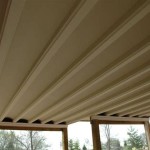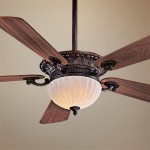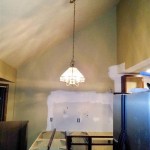How To Hang Stuff From The Ceiling
Hanging items from the ceiling can significantly enhance the aesthetic appeal and functionality of a space. Whether one intends to suspend lighting fixtures, decorative elements, plants, or even functional storage solutions, understanding the proper techniques and safety precautions is paramount. This article provides a comprehensive guide to hanging various items from the ceiling, covering essential considerations, necessary tools, and step-by-step instructions.
Identifying Ceiling Structures and Load Capacity
Prior to undertaking any ceiling-mounted project, identifying the ceiling's structural components is crucial. Ceilings are typically constructed using either wooden joists or metal studs, concealed behind a finishing material, such as plasterboard or drywall. These structural elements provide the necessary support to bear the weight of suspended items.
Locating Joists and Studs: The first step in assessing the ceiling's suitability involves locating the joists or studs. A stud finder, a handheld electronic device, can significantly simplify this process. These devices use sensors to detect changes in density behind the ceiling surface, indicating the presence of a structural member. When using a stud finder, it is important to calibrate the device according to the manufacturer's instructions to ensure accurate readings. Alternatively, one can employ a manual method by tapping along the ceiling. A solid sound typically indicates the presence of a joist or stud, while a hollow sound suggests an empty space.
Determining Load Capacity: Once the joists or studs have been located, it is necessary to assess their load-bearing capacity. This involves considering the material, thickness, and spacing of the structural members. Generally, wooden joists are capable of supporting heavier loads compared to metal studs. However, the specific weight capacity depends on factors such as the type of wood, its condition, and the distance between the joists. Consulting a structural engineer or a qualified contractor is recommended when dealing with particularly heavy items or when uncertainty exists regarding the ceiling's structural integrity. Ignoring load capacity can lead to structural damage or, more severely, complete fixture failure.
Avoiding Obstructions: Before drilling or driving any fasteners into the ceiling, it is essential to ascertain the location of any hidden wires, pipes, or ductwork. Using a stud finder with AC wire detection capabilities can help identify electrical wiring. If there is any doubt about the presence of hidden obstructions, it is advisable to consult with a qualified electrician or plumber. Drilling into a wire or pipe can cause electrocution, flooding, or other hazardous situations.
Selecting Appropriate Hanging Hardware
The selection of appropriate hanging hardware is critical for ensuring the safety and stability of suspended items. The type of hardware required depends on the weight and size of the object being hung, as well as the type of ceiling material. Several types of hanging hardware are commonly used for ceiling-mounted applications.
Screw Hooks and Eye Bolts: Screw hooks and eye bolts are versatile options suitable for hanging lighter items, such as plants, decorations, or lightweight lighting fixtures. These fasteners typically feature a threaded shank that screws directly into a wooden joist or stud. When using screw hooks or eye bolts, it is important to select a size and material that can adequately support the weight of the object being hung. Pre-drilling a pilot hole can facilitate installation and prevent the wood from splitting.
Toggle Bolts: Toggle bolts are designed for use in hollow ceilings, such as those constructed with drywall or plasterboard. These fasteners consist of a bolt and a spring-loaded wing that expands behind the ceiling surface, providing a secure anchor. Toggle bolts are particularly useful for hanging items when direct access to a joist or stud is not available. Choosing the correct size and weight rating of the toggle bolt is vital to prevent the fixture from coming loose.
Expansion Anchors: Expansion anchors function by expanding within a pre-drilled hole to create a tight grip against the inside surface of the ceiling material. These anchors are suitable for use in concrete or masonry ceilings. The selection of an expansion anchor should be based on the weight of the item being hung and the type of ceiling material. Proper installation is essential to ensure the anchor's holding power.
Chains and Cables: Chains and cables are frequently used for suspending chandeliers, pendant lights, and other heavy items. When using chains or cables, it is important to select a material with an adequate weight rating. Chains are typically made of steel and are available in various link sizes and finishes. Cables are typically made of steel wire rope and may be coated with plastic or other protective materials. Ensure the chains and cables are properly secured to both the ceiling and the item being hung, utilizing appropriate connectors and fasteners.
Step-by-Step Installation Procedures
Once the structural integrity of the ceiling has been assessed and the appropriate hardware has been selected, one can proceed with the installation process. The specific steps involved vary depending on the type of hardware being used and the item being hung.
Installing Screw Hooks and Eye Bolts: For items hung directly from a joist or stud using a screw hook or eye bolt, follow these steps:
- Mark the desired location on the ceiling.
- Using a drill bit slightly smaller than the diameter of the screw hook or eye bolt, pre-drill a pilot hole into the joist or stud.
- Thread the screw hook or eye bolt into the pilot hole, turning it clockwise until it is securely fastened.
- Hang the item from the hook or eye, ensuring that it is properly supported.
Installing Toggle Bolts: For items hung from a hollow ceiling using toggle bolts, adhere to the following procedure:
- Drill a hole in the ceiling that is large enough to accommodate the wings of the toggle bolt when they are folded.
- Thread the toggle bolt through the mounting bracket of the item being hung.
- Fold the wings of the toggle bolt and insert them into the hole.
- Push the toggle bolt through the hole until the wings open behind the ceiling surface.
- Tighten the bolt until the mounting bracket is flush against the ceiling. Avoid over-tightening, as this can damage the ceiling.
Installing Expansion Anchors: The installation of expansion anchors follows a similar set of considerations:
- Drill a hole in the ceiling that is the correct size for the expansion anchor being used.
- Insert the expansion anchor into the hole.
- Tap the anchor gently with a hammer to ensure it is fully seated.
- Tighten the bolt or screw that is used to expand the anchor. The method of tightening will depend on the specific type of expansion anchor being used.
- Hang the item from the anchor, ensuring that it is properly supported.
Hanging Lighting Fixtures: Installing lighting fixtures requires additional safety precautions. Before working with any electrical wiring, always disconnect the power at the circuit breaker. When wiring the fixture, carefully follow the manufacturer's instructions and ensure that all connections are secure and properly insulated. If unfamiliar with electrical work, it is advisable to hire a qualified electrician.
Weight Distribution and Safety Considerations: Regardless of the method used, it is important to distribute the weight of the item evenly across the hanging hardware. Using multiple points of support can help to prevent excessive stress on any single point. Regular inspections of the hanging hardware and the ceiling surface are recommended to ensure that the item remains securely suspended. Look for signs of loosening, cracking, or sagging. If any problems are detected, take immediate action to correct them. When working at heights, use a sturdy ladder or scaffolding and wear appropriate safety gear, such as eye protection and gloves.
Proper planning, careful execution, and adherence to safety precautions are essential for successful ceiling-mounted projects. By following the guidelines outlined in this article, one can confidently and safely hang a variety of items from the ceiling, enhancing the functionality and aesthetics of a space.

How To Hang Heavy Objects From The Ceiling 12 Steps

How To Hang Decorations From A Ceiling 7 Steps With Pictures

How To Hang Decorations From A Ceiling 7 Steps With Pictures

How To Hang Heavy Objects From The Ceiling 12 Steps

How To Hang Decorations From A Ceiling 7 Steps With Pictures

5 Ways To Hang Anything From The Ceiling

How To Hang Heavy Objects From The Ceiling 12 Steps

Discover How To Hang Decorations From Your Classroom Ceiling Nyla S Crafty Teaching

Things To Hang From Discount Ceiling

How To Hang Things From Popcorn Ceiling Renoviso
Related Posts








